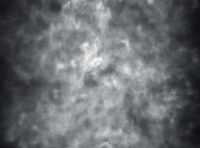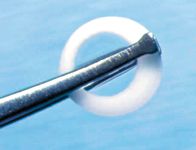Article
Confocal microscopy reveals biocompatible artificial cornea
Researchers have been working hard to develop an artificial cornea for use in patients who are at high risk of graft failure with a conventional corneal transplant. Patients at high risk of corneal graft failure are those who have undergone previous transplantations that were unsuccessful. Attempting to transplant another corneal graft after one, two, three, or more previous attempts likely will result in another failed procedure. In addition, patients without a previous corneal transplant in whom a donor corneal graft is likely to fail can also benefit from an artificial cornea.

In these patients, the choices for obtaining viable vision are limited. The goal of researchers is to devise an artificial cornea that will not be rejected by the patients' immune system. One type of artificial cornea, the AlphaCor artificial cornea (Cooper-Vision Surgical), is a one-piece convex disc consisting of a central transparent optic and an outer skirt that is manufactured entirely from poly (2-hydroxyethyl methacrylate) (PHEMA). The advantage of the porous skirt is that the patient's tissue can grow into the implant and the fibrous ingrowth can fix the cornea in place. AlphaCor is the only such device that is totally intracorneal; other models protrude either out of the eye, into the eye, or both.

The surgery to implant the artificial cornea is a two-part procedure. In the first stage, the patient's cornea is split to create a pocket. The anterior portion of the patient's cornea is folded over to expose the posterior part of the cornea. A 3-mm punch is used to create a central opening in the posterior layer of the patient's cornea. The artificial cornea is then slipped into the pocket, centered, and the anterior flap is closed.

The second surgical stage is performed about 3 months later. At this time, another 3-mm opening is made in the anterior portion of the cloudy natural cornea that was divided initially. This results in an opening that has only PHEMA, which enables the patient to see clearly.
AlphaCor is available in two versions to suit patients who are phakic, pseudophakic, or aphakic.
Confocal microscopy study

Newsletter
Don’t miss out—get Ophthalmology Times updates on the latest clinical advancements and expert interviews, straight to your inbox.




